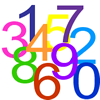Skip over navigation

A Brief Introduction to Complex Numbers
A Brief Introduction to the Argand Diagram
Complex Squares



Or search by topic
Number and algebra
Geometry and measure
Probability and statistics
Working mathematically
Advanced mathematics
For younger learners
Introducing Complex Numbers

Introducing Complex Numbers
This collection of resources has been designed to introduce students to complex numbers in an exploratory way. We have set challenges to provoke students to be playful within the structure of complex numbers and the Argand diagram, and we hope that this playful exploration will lead to a deeper understanding of the way complex numbers can be manipulated.
A Brief Introduction to Complex Numbers Age 14 to 18Challenge Level 


Age 14 to 18
Challenge Level 





This problem offers practice in manipulation of complex numbers while gaining insight into their structure
A Brief Introduction to the Argand Diagram Age 14 to 18Challenge Level 


Age 14 to 18
Challenge Level 





This problem introduces the Argand diagram and invites students to explore complex number multiplication dynamically.
Complex Squares Age 16 to 18Challenge Level 


Age 16 to 18
Challenge Level 





This problem invites students to explore on the Argand diagram the effects of squaring complex numbers.
You may also like
Statistical Investigations
A chance for students to use statistical skills to answer some interesting questions.
Curve Sketching Feature
Curve sketching can be a very useful tool when you are solving equations or inequalities.
Modular Arithmetic
Enter the world of modular arithmetic and discover the secrets of public key cryptography.

